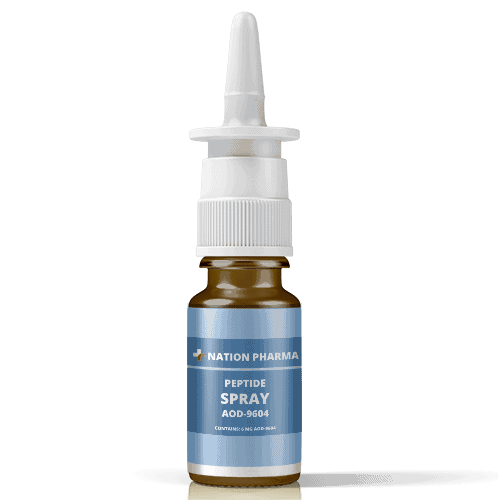Protocol for Researching AOD-9604 Spray:
For research purposes only, 7 sprays daily.
Lipotropin is the name for two hormones produced by the cleavage of pro-opiomelanocortin (POMC). The anterior pituitary gland produces the pro-hormone POMC, which is then cleaved again to form adrenocorticotropin (ACTH) and β-lipotropin (β-LPH).
β-Lipotropin is a 90-amino acid polypeptide that is the carboxy-terminal fragment of POMC. It was initially reported to stimulate melanocytes to produce melanin. It was also reported to perform lipid-mobilizing functions such as lipolysis[1] and steroidogenesis. However, no subsequent studies have been published that support these early findings and no receptor has been identified for β-lipotropin.
β-Lipotropin can be cleaved into smaller peptides. In humans, γ-lipotropin, β-MSH, and β-endorphin, are all possible fragments of β-lipotropin.[2] β-endorphin is the predominant opioid of the anterior human and rat pituitary gland. Birdsall and Hulme demonstrated that the C-fragment of lipotropin (β-endorphin) has a high affinity for opiate receptors in the brain, and the binding was reversed by naloxone, a classical antagonist of the opiates (Bradbury et al. 1976a). Alongside this, Feldberg found that β-endorphin administered in cat ventricles was 100 times more potent than morphine as an analgesic agent (Feldberg & Smyth 1976, 1977) and the analgesia persisted for several hours. Feldberg concluded that β-endorphin was the most potent analgesic agent known. β-Lipotropin is found in essentially equimolar concentrations to that of corticotropin. Evidence shows that β-Lipotropin is metabolized into endorphins that can greatly affect mood and behavior and is thus regarded as a prohormone.[3]

